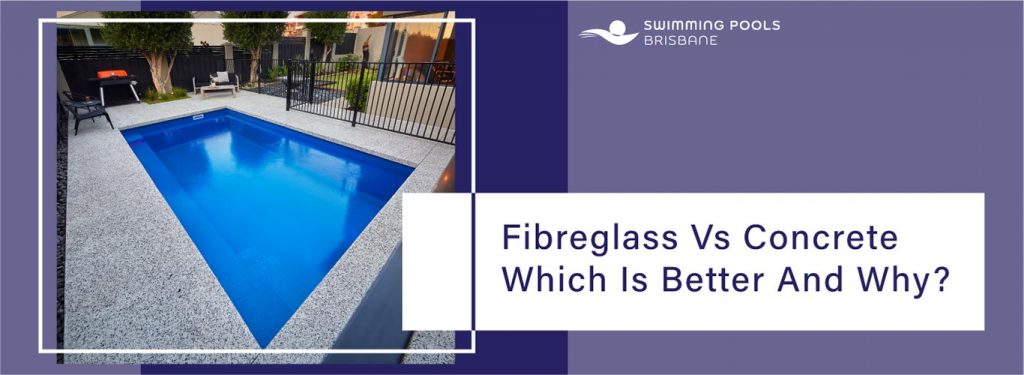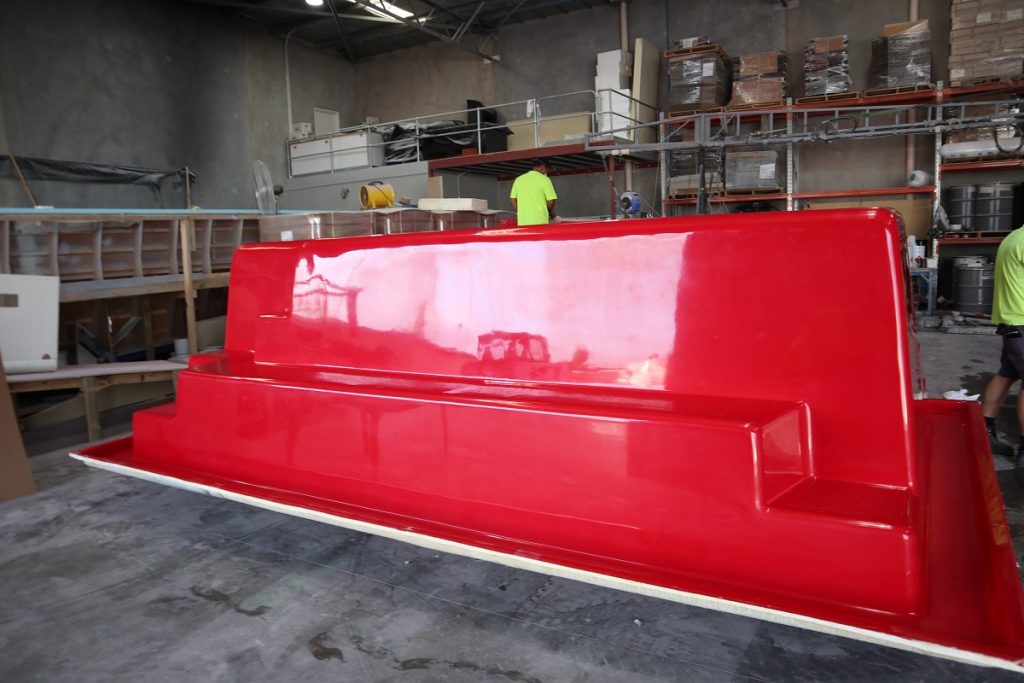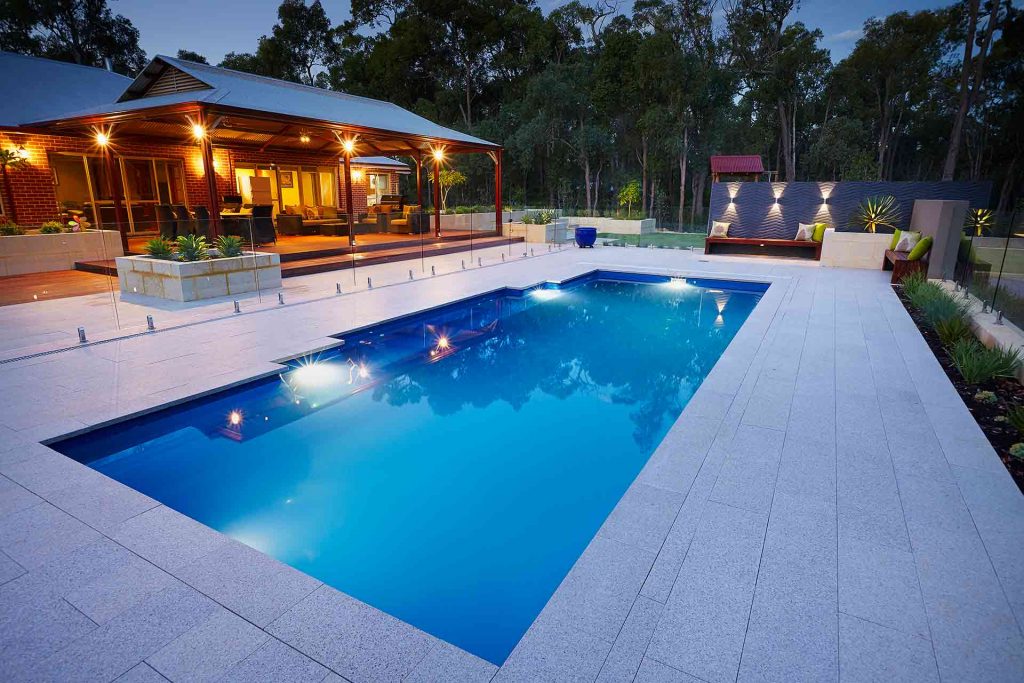Summer brings warm weather with it. Whenever there is an increase in temperature, our first thoughts are of a good dip in the pool. Having a swimming pool right in your home is a great way to relax. Choosing the right swimming pool is a big decision. After all, it will take up a major space in your backyard and be one of the most expensive items in your house. In fact, once it is in, you cannot change it easily. So it is important to get it right the first time itself. To help you in locking up your pool plans, you have two main choices in hand – fiberglass pools and concrete pools. Here, we will help you in understanding the different parameters of comparison between the two.

Cost
Fibreglass pools in Brisbane cost over 20% less than concrete pools in terms of installation. Most of the fibreglass pools can be installed within $45000- $85000, depending upon the manufacturing, installation, landscaping, and accessories. The only serious maintenance expenses for long term usage is in electricity and chemicals, for which you will be spending around $4000 for a 10 year period. In comparison, concrete pools cost between $50000- $100,000 for manufacturing and installation. Their maintenance for long-term usage requires a lot of TLC, such as acid washing, energy usage, and refinishing. This extensive upkeep costs around $25000 for 10 years. Thus, though the installation cost remains the same for both, maintenance costs make Fibreglass pool the clear winner in terms of cost.
Installation Time
The shell of the fibreglass pools is manufactured off-site. Later, it is transported to your backyard, where it is installed and then ready for usage within 2 days. Decking and patio take an additional week or two. Thus, the process of fibreglass pool installation takes around 3-5 weeks. In contrast, concrete pools take about 3-6 months for getting constructed. Thus, taking the installation time into consideration, Fibreglass pools again emerge a clear winner where it takes weeks instead of months to get installed.
Surface Texture
The inner surface of a fibreglass pool is called a gel coat. It is smooth and soft to touch. There are training ledges and steps that are designed within the pool to provide it an anti-slip texture. However, even these are not rough. In fact, it is similar to that of a bathtub. In comparison, concrete pools have a rough interior made of plaster coated concrete that can scrape the skin badly. It is difficult to walk on exposed aggregate like pebbles. You can remedy the problem through tiles, but not only does it offer a smooth finish but it is also one of the most expensive options available. Thus, where the concrete pools cost an arm and a leg to smoothen out the surface, fibreglass pools are pain-free and smooth by default. This makes Fibreglass pools the winner in terms of surface texture too.

Durability
The gel coat finish, as well as the pool structure of a fibreglass pool is super durable. In order to have silkier water and low maintenance of the shell, you can even use a salt-chlorine generator as salt has no harmful effects on fiberglass shell. In comparison, the concrete structure of the concrete pools is incredibly durable. Their interior finish is such that you do not have to worry about damages from tree branches, toys, or dogs. Still, concrete pools require replastering of the pool along with waterline tile replacement after every 10-15 years.
In case you use a salt-chlorine generator, the salt dissolved in water shortens the life expectancy of the interior finish based on plastic. This also includes the aggregate. However, if you have an expensive tile finish concrete pool, the saltwater has no effect on the same. When talking about durability, both the surfaces are extremely strong and durable. However, when it comes to saltwater and refinishing, concrete pools lose the battle. It may be hard to believe, but Fibreglass pools are stronger than concrete pools. They are able to withstand the movements of Earth in a much better way than the concrete pools. Clearly, in terms of durability and strength, fiberglass is the winner.
Maintenance
When it comes to hands-on maintenance, both pools have different requirements. Fibreglass shells have no effect on the pH balance of the water, so acid is rarely required for balancing the same. However, water chemistry still needs to be tested every week. In the case of concrete pools, the alkalinity of concrete causes the water pH to increase. This makes adding muriatic acid an everyday procedure. There is also the weekly cleaning of the entire pool surface with a steel brush. This helps in the removal of any surface algae. Thus, in terms of weekly maintenance, fibreglass pools require minimum effort and concrete pools need to be babysat so that they do not become ponds.
Algae
The shell of the fibreglass pools is coated with a gel coat making it smooth and completely algae resistant. This surface has microscopic pores, which makes it difficult for algae to burrow in it. On the opposite is the Concrete pool that offers many cavities and pores that invite algae. You need to clean the pool at least once a week to maintain its cleanliness. Thus, though regular maintenance is needed to keep your pool pretty and clean, fiberglass makes the work easier than concrete pools.

Chemicals And Electricity
Fibreglass pools require fewer chemicals and lesser electricity to stay in shape. When compared to the same parameter, water in concrete pools is alkaline-based, which makes regular adding of acid a basic necessity to maintain water chemistry. You need to buy extra chemicals and invest extra time and money to kill the water algae. The high maintenance of concrete pools also translates into higher electricity usage and higher chemicals. Thus, the winner on this parameter, too, is fibreglass pools.
Heat
Fibreglass pools require less electricity for heating and retaining heat than concrete pools. The pool’s inner lining and shell is thin and made of a material that does not take any heat for its own self. This helps in making and keeping the water warm faster. In comparison, concrete itself absorbs heat. Thus, the pool heater has to warm both the water and the concrete to maintain the temperature of the pool. This whole process requires more energy and more time for heating than the fibreglass pools.
Conclusion
Every person has different priorities for his or her pool. There are different characteristics that determine the best fit for your family. Whichever one you choose, always remember to look at some actual sites of both fiberglass and concrete pools. This will help you in making your final choice. The comparison above will help you in choosing the right pool that fits your required aesthetic. Also, if you already have a concrete pool and want to change over, you can get a fiberglass unit installed in it too. Not just for fun, pools also help in increasing the resale value of the house. A properly maintained pool is a worthy financial investment. Thus an inground pool can prove to be a quality life investment as well as a financial investment.

